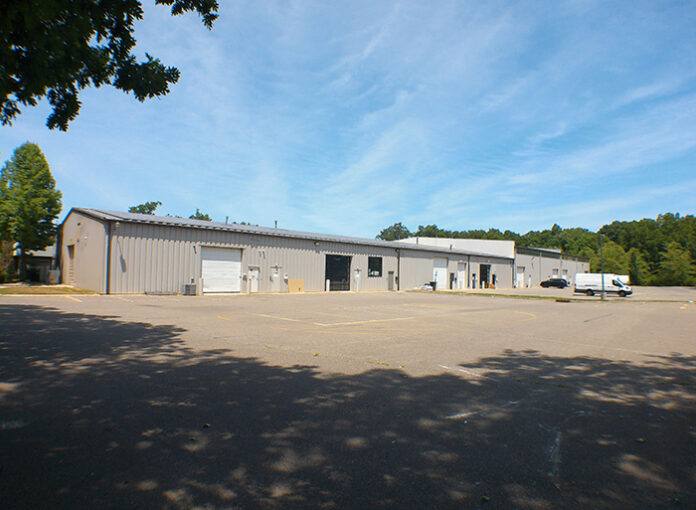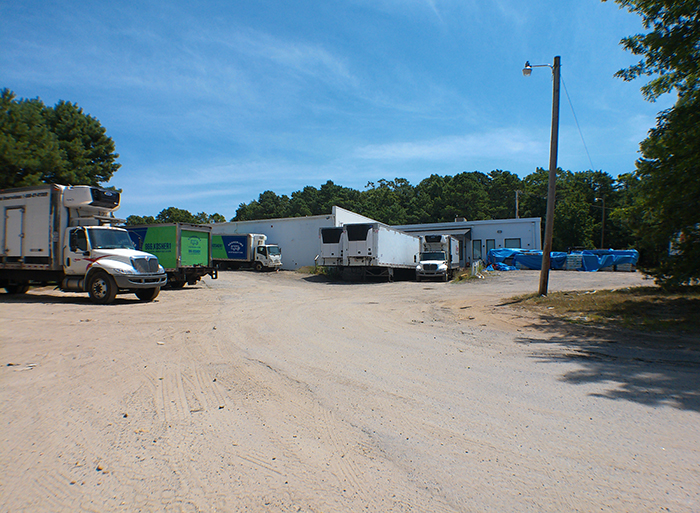
HOWELL – For anyone who has sat in on, or watched Howell’s Planning Board or Zoning Board meetings, it may seem that every other application that is brought before the township’s professionals concerns the construction of a new warehouse.
While township residents may lament the destruction of undeveloped forests, or the loss of acres of farmland to modern development, the trend in Howell is not unique to the town. Warehouse development in the United States has only increased, and there appears to be no end in sight.
When it comes to warehouses in New Jersey, however, geography is partially to blame.
Sitting between two of the largest cities in America, New York and Philadelphia, the Garden State reaps the economic benefits of such a strategic location. Add to that the fact that the state is bisected by I-95 and its proximity to water, and New Jersey becomes a prime location for shipping. Port Newark-Elizabeth is one of the country’s busiest ports, shipping and receiving goods and products of all types. But until those products are ready to be moved, they need to be stored in warehouses.
There is no denying the benefits that such development brings. The proposal of a warehouse project provides work and generates billable hours for attorneys and a variety of experts such as planners and engineers. If approved, the development brings construction jobs to the area, and the completed project creates permanent jobs and more importantly for the township, tax revenue.
Simply put, trees don’t pay taxes.
Just as with the family income, inflation cuts into the bottom line of Howell’s budget, as well. Without cutting programs to its growing population, on top of inflation, Howell requires an ever-increasing stream of income to maintain the myriad of services the residents require.
But undoubtedly, the sentiments of many residents about warehouses are similar to those towards prisons, namely, everyone recognizes the need for them, but they do not want them in their own neighborhoods.

As the economy moves away from traditional stores and more towards online shopping, the need to have products close to consumers for ready delivery continues to increase. This was especially pointed during the COVID pandemic, when in-person shopping was interrupted and even discouraged by elected officials. In short, the need to fulfill customer requests in a timely manner is driving the need for more warehouses.
“This is not a trend specific to Howell or even Monmouth County,” says Howell Director of Community Development Matt Howard. “We have heard this is becoming a very tangible reality across the state. This is not a result of the Township driving warehouse development. In fact, we are left trying to manage it and control it within our existing infrastructure.”
According to a recent (May 2022) article on statista.com, the number of warehouses in America increased by more than 4,000 in the 10-year period from 2010 to 2020. New Jersey has more than 600 warehouses that create jobs but also bring additional traffic to local roads and lowers air quality due to delivery vehicles.
But air pollution is not the only concern. The impervious surfaces that are created by warehouse construction due to buildings and parking lots cause water to run into stormwater management basins, which then sends the water into the underlying aquifer or out into storm sewers faster than it would through natural means. That, recent studies have shown, increases the chances for street flooding, especially for communities that are further down river of the storm sewers of neighboring towns.
The standards for managing stormwater in Howell are guided by the state (N.J.A.C. 7:8) as well as the township’s Stormwater Control Ordinance (S.C.O.). As such, any new developments must meet these guidelines, which is why the Zoning and Planning Boards have lengthy hearings wherein any applicants may find their plans scrutinized and questioned by the township.
Of course, not all sites nor development plans are equal, and so managing stormwater runoff may become a more difficult issue simply due to the layout or topography of the property in question.
“In regards to stormwater management, all projects in front of the Planning and Zoning Board are reviewed for compliance with the Township’s Stormwater Management ordinance as well as the State requirements,” says Howard. “This is one of the larger components of the site plan review process and is looked at very closely by our Board’s professionals.”
In Howell Township, commercial zoning ordinances stipulate that commercial developments have a coverage limit of 70 percent maximum for impervious surfaces. Locations targeted for development are deemed “major developments” if their total area exceeds one acre, or if their paved surface increases by more than a quarter of an acre. Should any site plan deviate from this maximum allowance, the applicant would need to request a variance, and show justification for its need.
“As land development and the addition of impervious surface increases on a site, without the implementation of stormwater management measures, runoff discharges to downstream water bodies more quickly and for a longer duration of time,” explains Howard about the challenges the township faces from future construction. “In general, the amount of stormwater runoff that needs to be managed on a site for a warehouse development is no different from any other development.”
But besides the issues that may develop from stormwater runoff, township residents may object to the simple placement of these structures, not to mention the increase in truck traffic they create. To combat this, Howell has recently revised its Master Plan to augment zones for uses better suited to their geographic areas in town.
With the recent adoption of ordinance O-22-22, the township hopes to better control stormwater, traffic, and new construction’s impact on existing infrastructure. Under the new ordinance, future site developers must meet more rigid conditions regulating maximum building coverage and lot sizes.

The most recent augmentations to the township’s Master Plan creates changes in zoning that seeks to better regulate where such structures are built while the Circulation Element looks to control where traffic flows. In addition, the township applies so-called “green” requirements for new warehouse construction, as well as regulating the potential for stormwater management issues.
It is likely that even tighter measures will be enacted in the future. Additional buildings means additional strain on the power grid, which may force the township into requiring future warehouses to be energy self-sufficient. In addition, the record high fuel prices seen during 2022 have given many to consider electric vehicles, which may even give the township the basis to demand that warehouses be zero-emission zones in the coming decades.
The warehouse is a consequence of the economy in the Twenty First Century and for now, Howell residents, like the rest of New Jersey’s population, can expect to see more of them.






